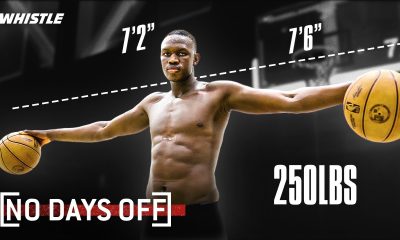NIL
Nuggets


Instant reaction from the Denver Nuggets’ 101-99 win over the Los Angeles Clippers in Game 4 of their first-round NBA Playoffs series on Saturday at Intuit Dome:
1. ‘All hands on deck’: Interim Nuggets head coach David Adelman vowed it would be “all hands on deck” for Game 4. What did that look like, exactly? Not all that different from the first three games, save for one change: With Russell Westbrook out with a foot injury, the first two players off the bench in the first quarter were second-year guard Jalen Pickett and … Vlatko Cancar?!?! Cancar hadn’t played a single minute of meaningful playoff basketball in this series before Saturday, then came in the first quarter and promptly turned the ball over on his first touch for an easy bucket the other way. The Slovenian lasted all of two minutes — illustrating just how few options Adelman has at his disposal.
2. MPJ’s true grit: Aside from Westbrook, the other big question coming into Game 4 was whether Michael Porter Jr. could grit his teeth through another game with his sprained left shoulder. MPJ admitted that he played at “20 or 30%” after Thursday night’s blowout loss. Then he came out Saturday with a bandaged shoulder and made just about every tough shot he took, including a stepback 3-pointer over Kawhi Leonard in the second quarter that was part of a 4-of-7 night from deep. That’s not to say there weren’t times when his injury reared its ugly head. Ball-handling, in particular, appeared to be a challenge. But anyone questioning MPJ’s toughness after Thursday’s minus-25 could only sit and watch Saturday as the veteran forward made his first big imprint on the series. If Denver gets more of the same from Porter in Tuesday night’s Game 5, the Clippers are in trouble.
3. Showing fight: You didn’t have to look hard to find takes declaring this series over after L.A. took a 2-1 lead late Thursday night. But after getting pushed around for much of this series, Denver took the fight to the Clippers on Saturday. The moment everyone will remember, of course, is Aaron Gordon taking exception with James Harden mean-mugging Christian Braun after a take foul — igniting a kerfuffle that resulted in six (!) offsetting technical fouls. But it was so much more than that. It was MPJ grinding out tough buckets. Braun crashing the boards and scoring around the tin. Gordon making Kawhi work. And Nikola Jokic playing the role of puppet master — as he always does. Even with Jamal Murray submitting a 5-for-17 dud, the Nuggets found a way to escape L.A. with the series knotted at 2-all. And now we’ve got ourselves a best-of-three with Denver reclaiming home court advantage — after Gordon’s putback dunk for the ages.
Want more Nuggets news? Sign up for the Nuggets Insider to get all our NBA analysis.
Originally Published:

NIL
Three Transfer Portal Players Dan Lanning Should Add To Oregon Ducks
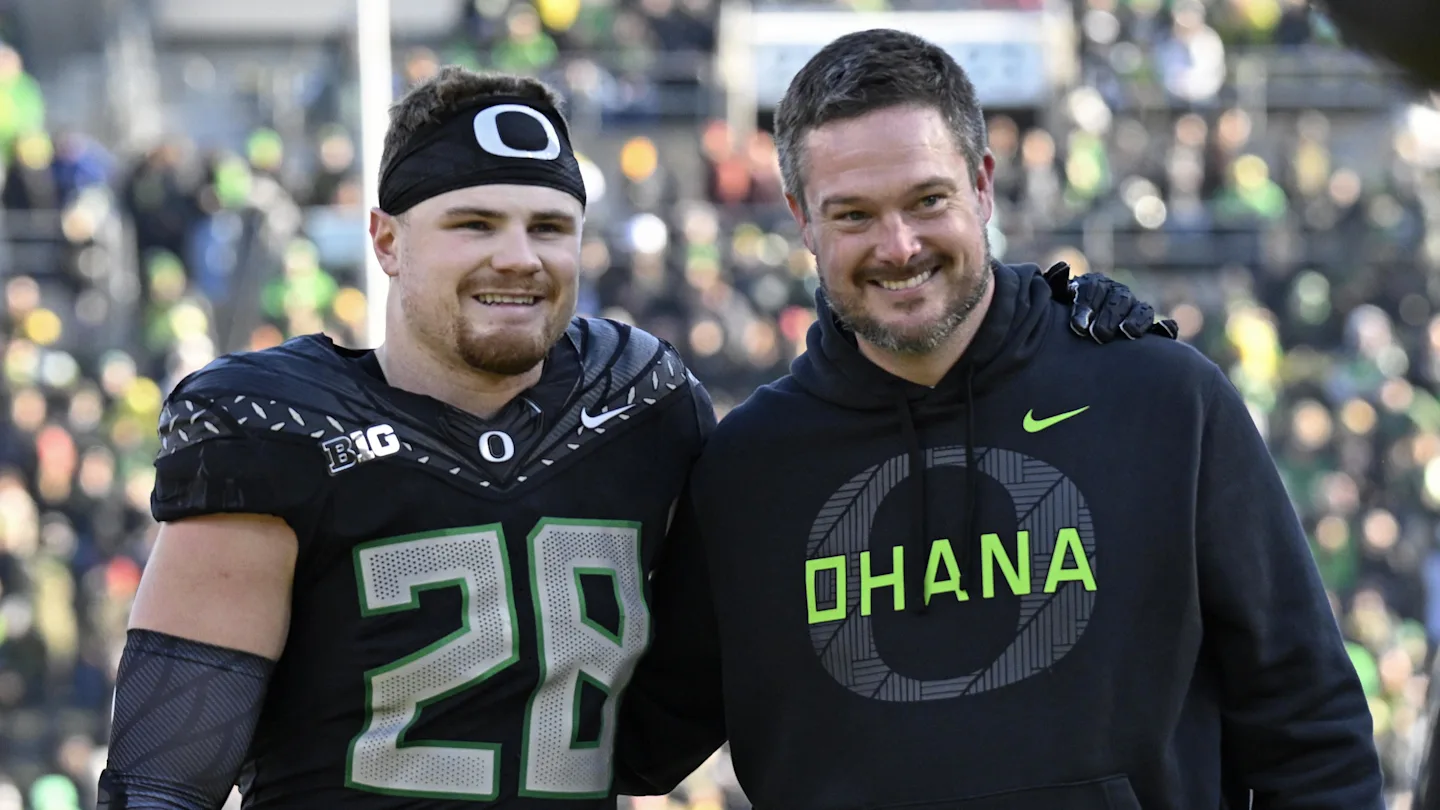
The Oregon Ducks are in the College Football Playoff for a second consecutive season and look to make a run to secure their first national championship in school history. While the Ducks’ main focus is reaching their goal of winning a national title, it’s not too early to look ahead to the offseason and what transfers Oregon may add to their team.
Oregon coach Dan Lanning has found success in past seasons in adding talent to the Ducks roster from the transfer portal. Last season, the Ducks had the No. 5-ranked transfer class, according to 247Sports, with a total of 11 commits.

The Ducks lost several talented players to the NFL Draft last season, and it is expected to be the same case for Oregon this offseason as well. Oregon quarterback Dante Moore and tight end Kenyon Sadiq are among the top stars for the Ducks who are expected to be top selections in the 2026 NFL Draft.
With those key departures set to take place this offseason, here’s a look at some of the top transfer portal players that Lanning and the Ducks could consider going after to add to their roster for the 2026 season.
Khmori House, North Carolina Linebacker

With star linebacker Matayo Uiagalelei set to be a first-round selection in the 2026 NFL Draft and Bryce Boettcher graduating, the Ducks may go after multiple top transfer linebackers this offseason. North Carolina linebacker Khmori House is one of those transfers that the Ducks could potentially consider adding this offseason.
House is ranked as the No. 1 transfer linebacker, per 247Sports, and would be a valuable addition to Oregon’s defense that aims to remain dominant heading into next season. In two seasons with Washington and North Carolina, House has recorded 111 total tackles, two interceptions, and one forced fumble. Adding House to a defense that ranked among the best in the Big Ten and the country would be a massive steal for the Ducks.
Michael Short, Virginia Tech Linebacker

Another top linebacker that the Ducks could land is Michael Short from Virginia Tech. Short is ranked as the No. 2 transfer linebacker, per 247Sports. While it’s not a guarantee that Oregon will add both Short and House, adding one of them would be considered a success for the Ducks.
MORE: Oregon’s Breakout Freshman Emerges As Potential X-Factor For The Playoff
MORE: Why Cleveland Moving On From Dillon Gabriel Could Be a Blessing in Disguise
MORE: Four-Star Safety Makes Recruiting Announcement With Oregon, Alabama, Ohio State
SIGN UP FOR OUR NEWSLETTER HERE!
In two seasons with North Carolina and Virginia Tech, Short collected 45 total tackles and one sack. After playing in five games with the Hookies this season, Short redshirted and was sidelined for the remainder of the season.
Short underwent two coaching changes during his time with the Tar Heels and Hokies. Playing under an experienced coach, Dan Lanning, who has built a great culture with Oregon, makes the Ducks a valuable landing spot for Short.
Tyrell Green, Interior Offensive Lineman
Oregon’s offensive line has played a pivotal role in the success of the Ducks’ offense this season. The group’s protection has allowed quarterback Dante Moore to be efficient and Oregon’s dominant running back trio of Noah Whittington, Jordan Davison, and Dierre Hill Jr. to flourish.
With Iapani Laloulu projected to be drafted in the NFL Draft this offseason, the Ducks may look to add a transfer to their interior offensive line. Purdue interior offensive lineman Tyrell Green is a piece the Ducks could add. Green is ranked as the No. 2 interior offensive lineman transfer, per 247Sports, and would be a great replacement for Laloulu.
The Ducks have seen success with transfers from Purdue before, as they added star defensive back Dillon Thieneman from the Boilermakers this season. Oregon looks to find success once again with a top player for the Boilermakers this go around.
Recommended Articles
NIL
Indiana NIL collective takes pathetic shot at Ohio State football with new shirts
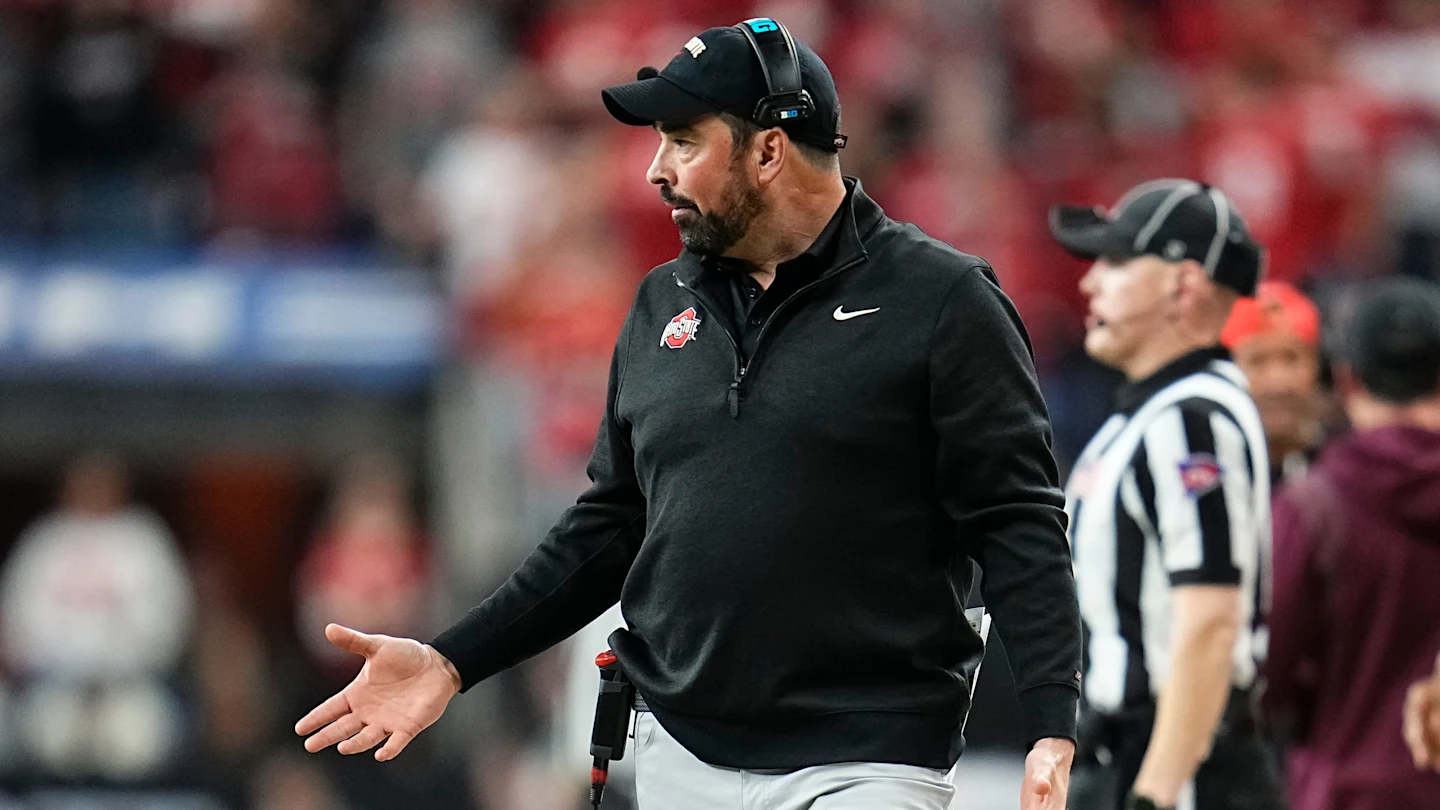
The Indiana Hoosiers, at this point, have won their Super Bowl by taking down Ohio State in the Big Ten title game, but the Buckeyes know that while a Big Ten title was a goal, there is a bigger game ahead. While the Buckeyes would have loved to win the Big Ten Championship, a National Championship win is the ultimate goal.
Since beating the Buckeyes, Indiana has certainly taken every opportunity to rub the win in Ohio State’s face, including making shirts and selling them for NIL money. After the win, quarterback Fernando Mendoza uttered the phrase ‘flippin’ champs,’ and when Curt Cignetti spoke to the Hoosier faithful for the first time after being hired, he also had a memorable quote.
“Purdue sucks,” Cignetti said. “But so do Michigan and Ohio State.”
While Ohio State fans will agree with the Michigan part, the fact that they are now selling shirts with those quotes on them just seems like a pathetic attempt to troll Ohio State.
Reminder to flippin’ support NIL ;)https://t.co/oH7oL4KitU pic.twitter.com/yAcgJaDgAc
— Hoosiers Connect (@HoosiersConnect) December 10, 2025
Ohio State knows a bigger game is ahead of them
As stated earlier, of course, Ohio State would have wanted to win the Big Ten Championship, but sometimes suffering a loss can help teams go forward. Last season, while the Buckeyes never wanted to lose to Michigan, that loss helped fuel the team in the College Football Playoff and to a National Championship win.
Indiana is riding high right now, but they now have to bring themselves back down to Earth and get ready for the CFP. Last season, all of the one-seed teams lost in their first matchups after the bye, and some of those could very well happen again this season.
Ohio State knows that it needs to be in the right mindset going into the CFP with a target on its back as the reigning champions. A loss can put things into perspective for teams and show what needs to be worked on.
NIL
Why Michigan’s coaching search instantly becomes a race against time
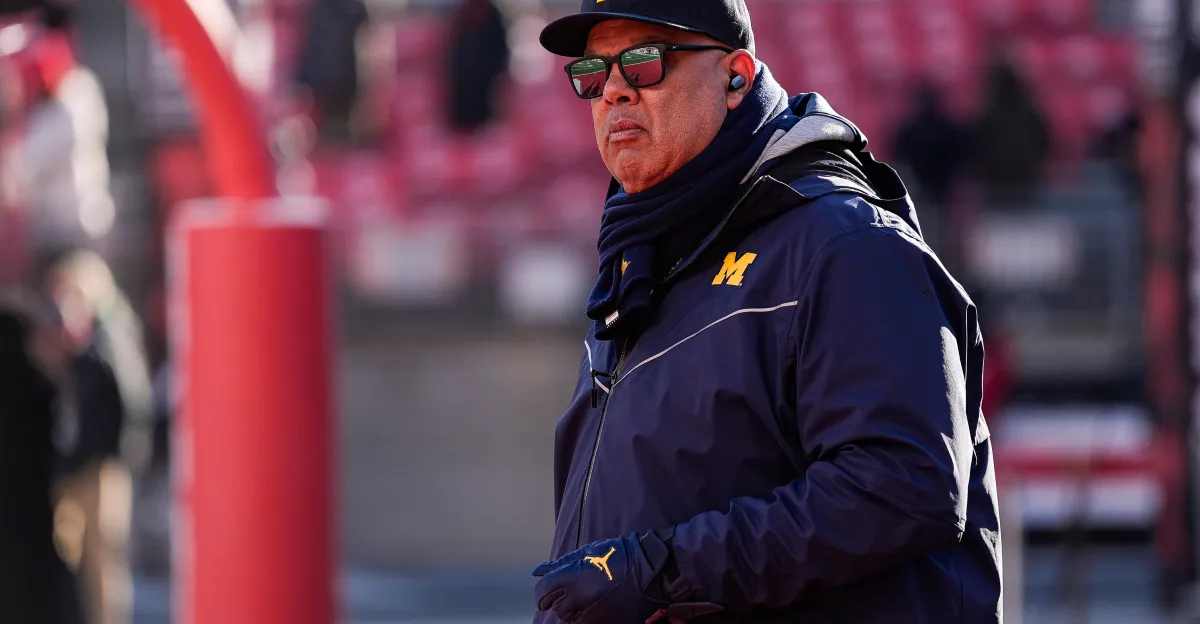
The Michigan football program could not have found itself in a more disruptive moment to deal with a full-blown coaching crisis. The abrupt firing of head coach Sherrone Moore has thrown the program into instability at the exact point of the year when college football programs need to be the most organized.
The unfortunate truth to all of this (from just a college football standpoint) is Moore’s dismissal doesn’t just create a leadership vacuum — it collides directly with the most delicate stretch of the college football calendar. The transfer portal’s primary window opens on Jan. 2 and only lasts two weeks, and Michigan enters that period without a permanent coach to reassure players, guide roster plans, or engage in the backchannel relationships that define portal recruiting in today’s landscape.
More critically, NCAA rules will inevitably trigger a 15-day transfer window for all current Michigan players once a new hire is announced. This means the Wolverines are facing the possibility of back-to-back waves of player movement if the search stretches too long. In other words: interested programs will be ready to pounce, quickly and legally, once those windows open.
Behind-the-scenes portal work and early NIL discussions are also assuredly starting to take place. Without a head coach, Michigan will have a hell of a time participating in this process competitively. Every day without clarity is a day where other programs strengthen their position with some of the nation’s top available prospects while the Wolverines continue to catch up.
The timing is equally damaging on the recruiting front. Michigan’s 2026 recruiting class, ranked 11th nationally per 247Sports, is already in jeopardy. Under NCAA rules, recruits who signed their National Letters of Intent may now request releases due to the coaching change, including prospects like five-star running back Savion Hiter and five-star edge rusher Carter Meadows.
Still, Michigan has one crucial advantage: its brand power. The Wolverines remain one of the biggest names in college football with national reach, a strong NIL infrastructure, top-tier facilities and a track record of producing NFL talent. That prestige will keep some players and recruits interested in what the next move is, but the Block M alone cannot hold the roster together indefinitely. Stability needs to follow, and quickly.
Familiar names like Washington head coach Jedd Fisch or Los Angeles Chargers defensive coordinator Jesse Minter would bring ties to the program and a built-in understanding of its culture. Others like Kalen DeBoer, Clark Lea and Kenny Dillingham represent more ambitious swings outside of the traditional Michigan hire.
Everything that happens next will shape the foreseeable future of Michigan football. The recruiting class is vulnerable, the roster is undoubtedly tired of the drama, the transfer portal is around the corner, and the internal 15-day portal window will open shortly after a new head coach is hired. Every day without a leader increases the chances of losing players, recruits, staff and momentum.
Michigan is officially on the clock.
NIL
Gear up for the Texas A&M Aggies in the 2025 College Football Playoff
Updated Dec. 11, 2025, 6:26 p.m. ET
It’s the best time of year to be a college football fan. After another chaotic season, the field for the 12-team College Football Playoff has been set, and in just a few short weeks we’ll be crowning a new national champion.
Indiana, Ohio State, Georgia, Texas A&M, Texas Tech, Alabama, Oklahoma, Tulane, Ole Miss, Miami (Fla.), Oregon and James Madison are the final teams standing. Whether you’re a lifelong Aggies fan, or just jumping on the bandwagon this year, we’ve got plenty of ways to gear up for the postseason. Here’s everything you need to cheer on Texas A&M throughout the College Football Playoff.
Related:How to buy tickets for every College Football Playoffs game
Texas A&M vs. Miami CFP tickets

Texas A&M Aggies adidas NIL Pick-A-Player Replica Football Jersey – Maroon

Texas A&M Aggies adidas NIL Pick-A-Player Replica Football Jersey – Maroon
Show Aggies pride in this game day ready adidas jersey. It has heat-sealed name, numbers and team details. Shop at Fanatics
Lucchese’s The Olsen

Lucchese’s The Olsen
This pair honors Texas A&M’s baseball history, named after their iconic baseball field. Shop at Lucchese
Texas A&M Aggies YETI Roadie 32 Wheeled Cooler

Texas A+M Aggies YETI Roadie 32 Wheeled Cooler
The Roadie 32 Wheeled Cooler is easy to maneuver, durable and fits in a small trunk, making it ready to navigate tailgate crowds. Shop at Fanatics
Dooney & Bourke Collegiate Texas A&M Belt Bag

Dooney + Bourke Collegiate Texas A+M Belt Bag
This belt bag has one inside zip pocket, two inside credit card slots and an inside key hook. Shop at Dooney & Bourke
Shop more College Football Playoff deals for Aggies fans
NIL
Why College Football Teams Are Turning Down Bowl Game Bids
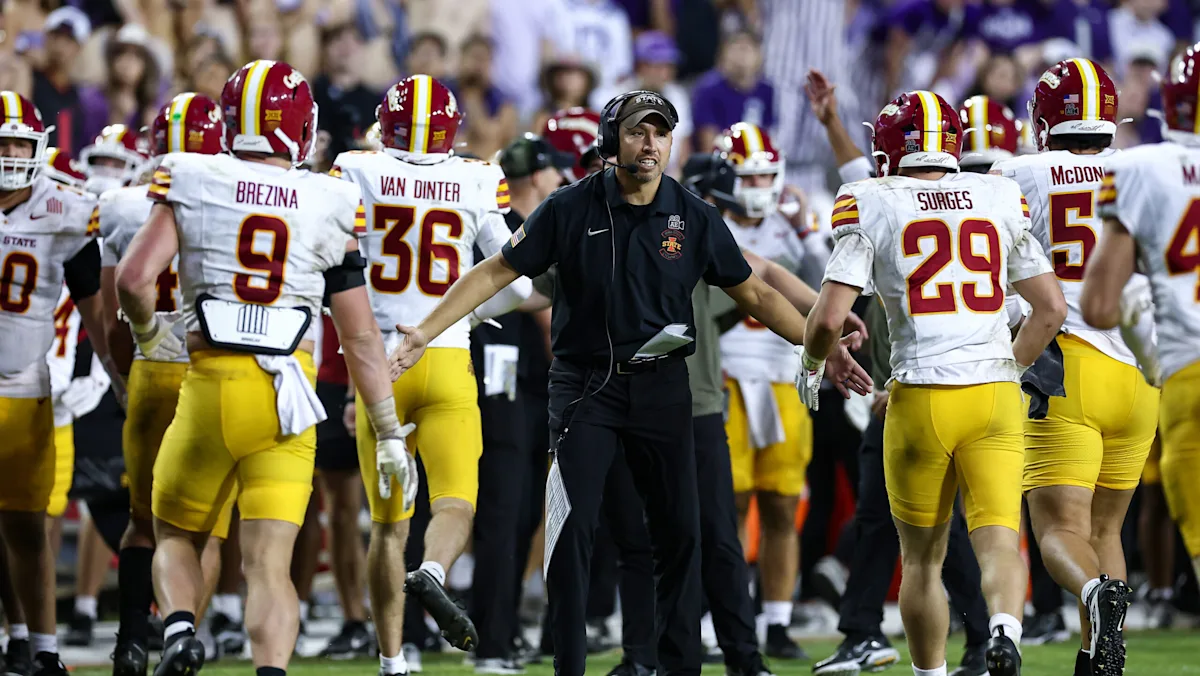
Teams are increasingly declining bowl bids due to coaching changes, NIL dynamics, transfer portal chaos, and financial losses, reshaping the postseason landscape.
Throughout college football history, the bowl game marked the celebratory conclusion of a successful season, or at least one in which teams finished with at least a .500 record and became bowl-eligible. Teams’ fans travel from far and wide to cheer their team on national television in a festival-like environment. But the new era of college football has threatened the model that has served the sport admirably for more than 80 years.
Advertisement
Notre Dame declined its invitation to the Pop-Tarts Bowl this week after being omitted from the 12-team College Football Playoff field, but so did 8-4 Iowa State and 6-6 Kansas State. And to replace those teams and complete the full field of 41 bowl games, some teams that went 5-7 were invited. But then, other 5-7 teams declined as well, including Florida State, Auburn, Kansas, Baylor, Rutgers, and UCF.
Why would college football teams decline to play in the postseason, something college teams, players, and fans look forward to all year? There are a few reasons, according to Matt Brown, who writes the excellent Extra Points college sports newsletter on Substack.
“The dirty little secret is these games often lose money for the schools,” Brown told Boardroom. Lower-tier bowl games require schools to buy a certain number of tickets. “If you’re a Power 4 team and you’re 6-6 or 5-7, your fans are not going to be as excited about buying ticket packages to go watch you play Central Michigan. There’s also the fact that the calendar itself has significantly changed.”
The college coaching carousel seemingly started earlier than normal this year, with James Franklin being fired from Penn State and Lane Kiffin famously leaving Ole Miss for LSU. Iowa State head coach Matt Campbell left the Cyclones for the Penn State job, while Kansas State’s Chris Klieman announced his retirement. Those coaching changes, Brown believes, were big contributors to ISU and K-State declining their bowl games. And even though the Big 12 fined each school $500,000 for not participating in bowl season, that fine may have been less than the losses they would’ve incurred had they gone through with their bowl games.
Advertisement
For those 5-7 schools that declined offers, they had already begun their respective offseason processes. Assistant coaches were scrambling for better opportunities elsewhere. A percentage of rosters were already making moves via the transfer portal. In some of these cases, it may have been difficult to cobble together a roster and a coaching staff to make this bowl appearance happen. The NIL and transfer portal era, as Brown alluded to, makes the calendar more difficult for these schools to be nimble enough to accept an invitation on short notice.
NIL has also made the allure of these smaller bowl games less appealing. Bowl games, even as recently as 5-10 years ago, were known for the gift packages players received, which were big considering players weren’t officially allowed to make money.
“Even if you were going to a lousy bowl game and didn’t have a great season because it was kind of like a mini vacation where you were allowed to receive gifts,” Brown said. “You might get a free PlayStation, a Fossil watch. You typically do a bunch of team-building activities, and the practices aren’t as intense. But if you’re making $145,000 a season to play football, do you give a shit about any of that?”
If this trend of more teams opting out of bowl games becomes more prevalent, no stakeholder has more to potentially lose than ESPN. The network not only holds broadcast rights to all but a few bowl games, but also owns and operates 17 of the games outright under its ESPN Events umbrella. Luckily for the worldwide leader, Brown doesn’t think ESPN needs to be too concerned about the current bowl game model being threatened by some 6-6 or 5-7 teams opting out.
Advertisement
“For these lower-tier bowl games, the only reason that these games are worth it for ESPN is because of the television rating that it would generate as essentially gambling inventory during a slow time on the sports calendar,” Brown said. “And it doesn’t really matter who plays in the game. The Boca Raton Bowl is going to do about the same rating, given its time slot and date, no matter who you potentially fill in from there. Having to use Appalachian State instead of Auburn or Rutgers doesn’t fundamentally change the value prop for ESPN at all. And for that matter, they could have 15% of both teams opt out to hit the transfer portal, and it won’t change ESPN’s value prop. Roughly the same amount of people are going to watch the game. If those ratings begin to ever dip, that would change the model. But people in this country really like watching football in December. They don’t really care who it is.”
Brown doesn’t think it will be common for a team that expects a bowl invitation to decline. You may still see it for 5-7 teams, especially from power four conferences, since there’s almost always going to be significant turnover on those rosters and coaching staffs. For a blue-blood program like Ohio State, Texas, or Notre Dame, Brown could see them decline bowl invites if they somehow go 6-6 in a given season.
Hypothetically, bowl games could incentivize certain teams and players to participate by offering them more money. But a large majority of these lower-tier games already operate on razor-thin margins, Brown said, and it’s a lot easier to pay an NIT-bound basketball team of 12-15 players than a 6-6 football team of 80-90 players.
So as long as the current model of revenue sharing, NIL, and the transfer portal in college sports remains the same, there will inevitably be major conference .500 teams that feel that going to a bowl game is just not worth it for them. While the tradition and pageantry of the bowl season will live on, along with fans getting their December gambling fix on ESPN, some fan bases looking forward to seeing their mediocre team play one more game will inevitably just have to wait ’til next year.
Advertisement
Read More:

Entertainment December 11, 2025
The Real Reason There Seems to Be More Mid Movies and TV Shows

Deals & Investments December 11, 2025
Why PepsiCo Is Bringing Doritos and Gatorade to Formula 1

Sports December 10, 2025
Ex-NFLPA Director DeMaurice Smith on Roger Goodell, NFL Owners, and the Future of Football

Sports December 10, 2025
Paige Bueckers: The Future

Sports December 10, 2025
Anthony Edwards: The Crown Prince

Media December 9, 2025
Unfinished Business: How Hoonigan Finally Took Gymkhana Down Under
NIL
Coveted $29 million college football HC emerges as a favorite to be next Michigan coach
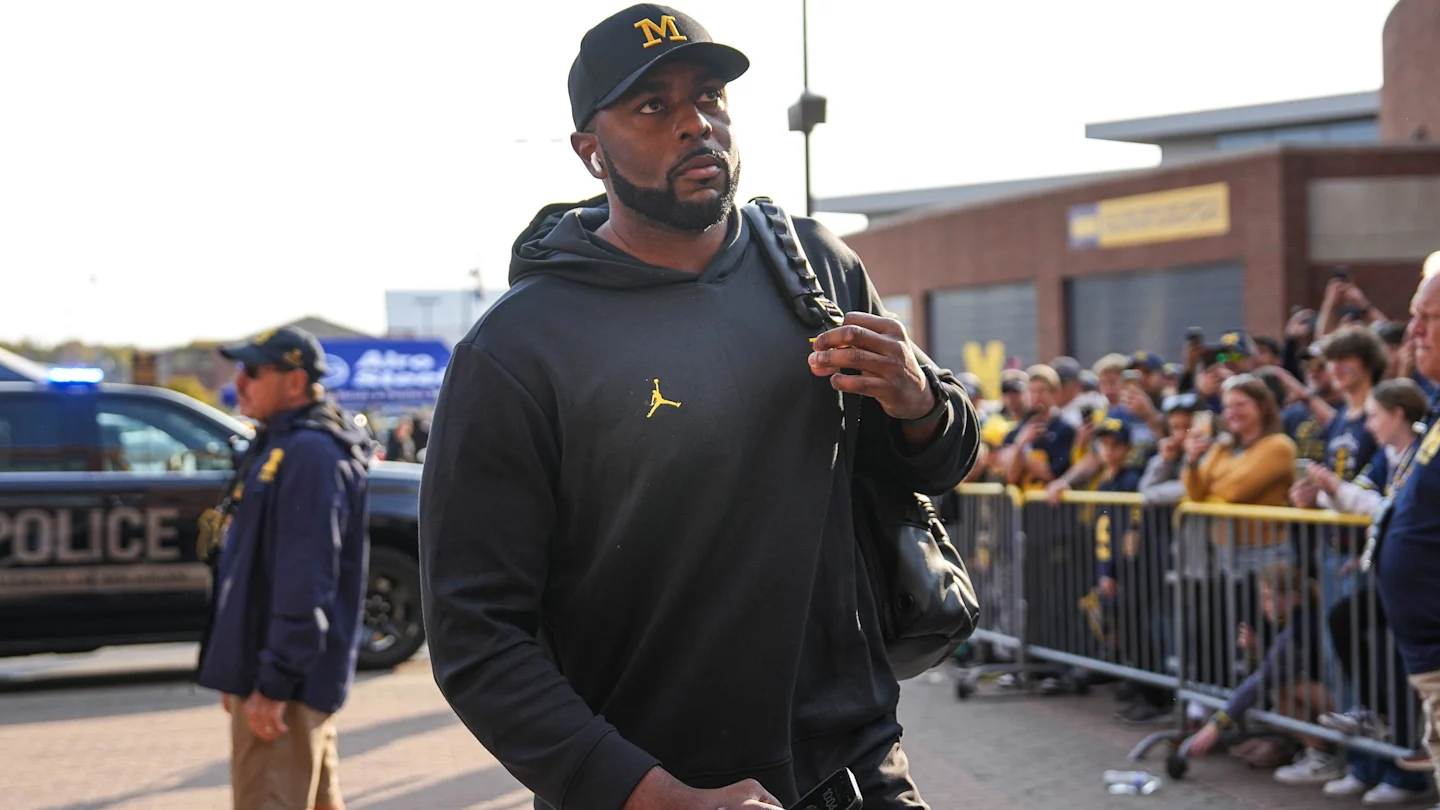
Michigan surprisingly fired Sherrone Moore and is now searching for a new head coach. The Wolverines missed the busy season of the college football coaching carousel.
It will be worth watching who Michigan is able to land during a unique hiring window. Several college football coaches have emerged as favorites to be named the next Michigan coach.
Alabama’s Kalen DeBoer has surged to the top of the list of the betting odds with a 29% chance, per Kalshi. Washington’s Jedd Fisch is second at 23% and had previously been linked to other openings like Florida before the Gators hired Jon Sumrall.
One of the more intriguing names is Arizona State’s Kenny Dillingham, who is third in the odds at 17%. Let’s dive into the latest rumors surrounding Michigan’s coaching search.
Potential Michigan target Kenny Dillingham signed a $29 million contract extension with Arizona State in Jan. 2025
Dillingham has been a popular name amid a busy coaching carousel, but so far has not shown an eagerness to leave his alma mater. The coach has helped make Arizona State into a perennial Big 12 contender and led the Sun Devils to a College Football Playoff berth in 2024.
“I was never leaving … I never said I was leaving.”
Kenny Dillingham says ASU is “home,” but it’s his responsibility to push for more for the program otherwise he’s “cheating everybody” involved. pic.twitter.com/onpbWRcTLo
— Arizona Sports (@AZSports) November 15, 2025
Back in January, Dillingham signed a five-year, $29 million contract extension with Arizona State, per ESPN. It will be worth watching to see if Michigan could entice Dillingham to leave home.
Arizona HC Kenny Dillingham on coaching rumors: ‘This is home’
Michigan could offer Dillingham more NIL resources than Arizona State. So far, Dillingham has shown patience despite constant rumors linking him to other jobs.
Kenny Dillingham on whether he took calls about coaching changes on the @travistaketwo podcast:
“My agent did. I made it very clear where I wanted to be to all those people… During our football season, I talked to zero people about any other job.”@DevilsDigest pic.twitter.com/OqM2tTo4lt
— George Lund (@GLundMedia) December 10, 2025
“I never said I was leaving,” Dillingham noted back in November, per Newsweek. “This is home. You do have to continue to push. And my job running the program is to push and push and push until you can’t push anymore.
“And if I didn’t do that, I’d be cheating my players. I’d be cheating my staff. I’d be cheating the fan base. I’d be cheating everybody in the city. I’d be cheating the local businesses that feed off of us winning, and then they sell more beer. I’d be cheating everybody,” Dillingham continued.
“My number one goal always is to do whatever I can to push the envelope for Arizona State football.”
-

 Rec Sports3 weeks ago
Rec Sports3 weeks agoFirst Tee Winter Registration is open
-

 Rec Sports2 weeks ago
Rec Sports2 weeks agoFargo girl, 13, dies after collapsing during school basketball game – Grand Forks Herald
-

 Motorsports2 weeks ago
Motorsports2 weeks agoCPG Brands Like Allegra Are Betting on F1 for the First Time
-

 Motorsports3 weeks ago
Motorsports3 weeks agoF1 Las Vegas: Verstappen win, Norris and Piastri DQ tighten 2025 title fight
-

 Sports2 weeks ago
Sports2 weeks agoTwo Pro Volleyball Leagues Serve Up Plans for Minnesota Teams
-

 Sports2 weeks ago
Sports2 weeks agoUtah State Announces 2025-26 Indoor Track & Field Schedule
-

 Sports2 weeks ago
Sports2 weeks agoSycamores unveil 2026 track and field schedule
-

 Motorsports2 weeks ago
Motorsports2 weeks agoRedemption Means First Pro Stock World Championship for Dallas Glenn
-

 Motorsports2 weeks ago
Motorsports2 weeks agoJo Shimoda Undergoes Back Surgery
-

 Sports2 weeks ago
Sports2 weeks agoTexas volleyball vs Kentucky game score: Live SEC tournament updates
















